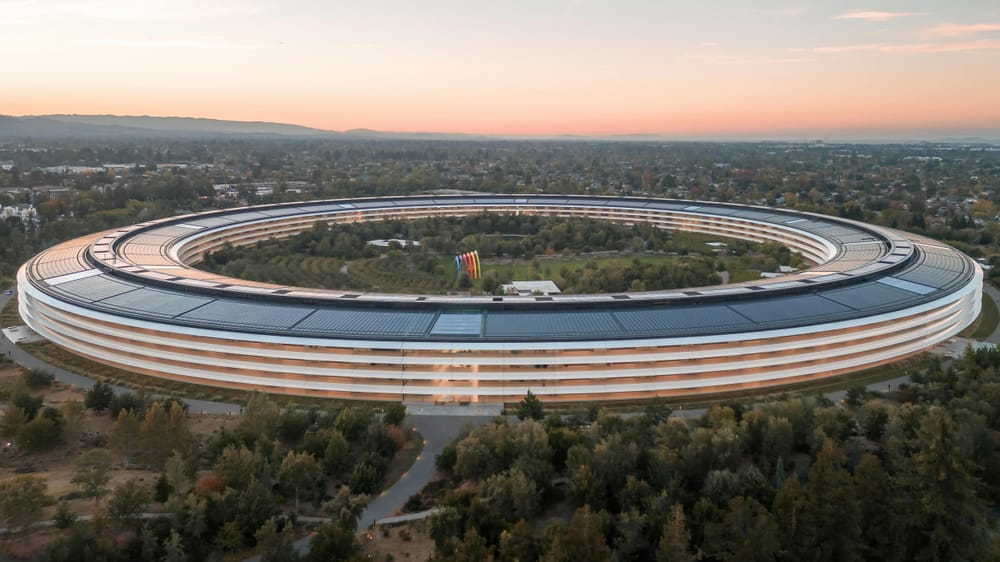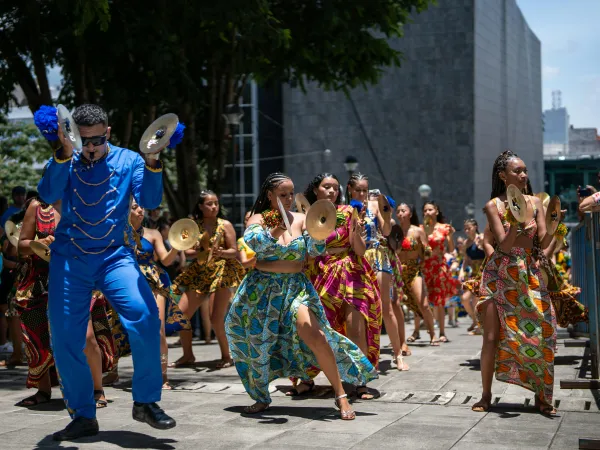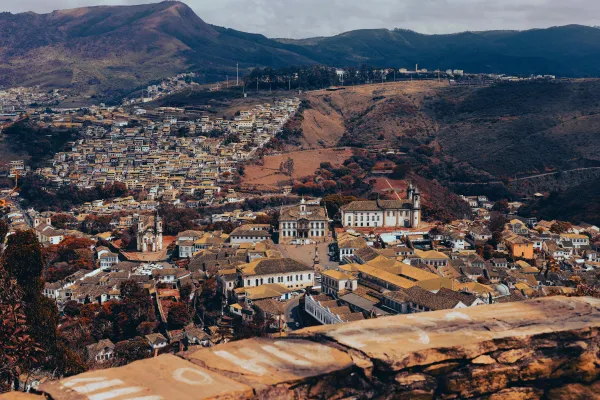15 Most Fascinating Things To Do In Cupertino, California
Cupertino may be best known as the headquarters of Apple, but its story stretches back far before Silicon Valley reshaped the landscape. For centuries, Indigenous Ohlone peoples lived along its creeks and woodlands, leaving a cultural footprint that predates ranchos and orchards. In the 19th century, Spanish and Mexican land grants turned the rolling hills into grazing pastures, and by the early 20th century, Cupertino had become part of the Valley of Heart’s Delight, a fertile patchwork of cherry, plum, and apricot orchards that fed the world.
The postwar boom of the 1950s transformed these farmlands into suburbs. Schools, parks, and community centers followed, laying the groundwork for a city that could grow with the tech revolution just around the corner. Cupertino’s identity became one of reinvention—balancing tradition, natural beauty, and the innovation of a region that would soon power the world’s digital age.
In this blog, we will explore the most fascinating things to do in Cupertino—from historic gardens and family attractions to scenic open spaces and landmarks that reveal how this once-rural valley became the beating heart of Silicon Valley.
1. Stevens Creek County Park
Important Information
- Fun Fact: A scenic park along the Stevens Creek Reservoir, perfect for hiking, picnicking, and birdwatching.
- Address: 11401 Stevens Canyon Rd, Cupertino, CA 95014
- Best time to visit: Spring through fall for ideal weather and green scenery.
- Distance to city center: About 4 miles southwest of downtown Cupertino.
- Pricing: Free entry; parking $6 per vehicle.
- Parking: Multiple paved lots available.
- Accessibility: Accessible restrooms, picnic areas, and trails.
- Opening Hours: Daily 8 a.m.–sunset.
- Closing Hours: Varies seasonally (typically 7–8 p.m.).
- Discounts / Deals: Annual county park passes available.
Tucked into the foothills of the Santa Cruz Mountains, Stevens Creek County Park is more than a recreational escape; it’s a landscape with centuries of human and natural history. The park surrounds Stevens Creek Reservoir, named after Captain Elisha Stephens, a pioneer who led one of the earliest wagon trains over the Sierra Nevada in 1844. His name lives on in the creek that once sustained orchards and vineyards in the Santa Clara Valley, long before it became Silicon Valley.
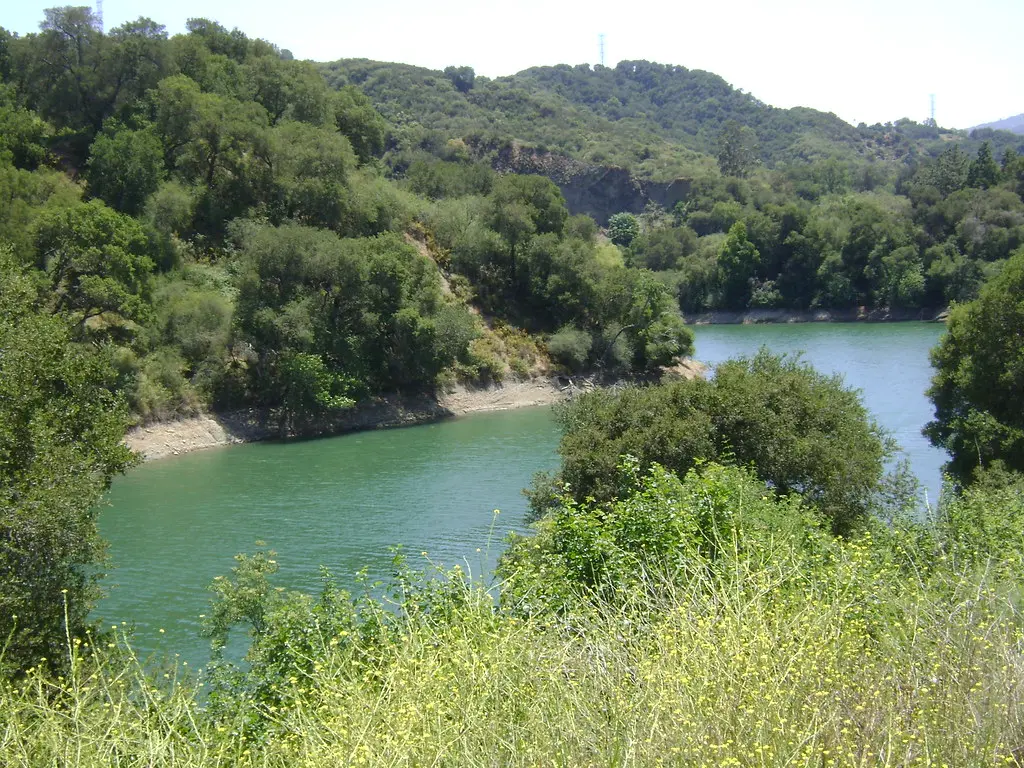
In the late 19th and early 20th centuries, this land was part of the Valley of Heart’s Delight, a patchwork of fruit farms and canneries that supplied the world with apricots, plums, and cherries. The reservoir, completed in 1935, reflected a new era of water management as urban growth began to outpace agriculture. By the 1970s, the park was established to preserve the area’s natural habitat while offering recreation for a rapidly expanding community.
⭐⭐⭐⭐⭐ - Joanna Sim
One of our favorite local hikes in the area. It is dog friendly and partially shaded. Parking is paid but that’s why I never fail to find parking. Reservoir is full now and on weekends you can bring in paddle boats or rent kayaks. $25 for single and $40 for double.
2. Main Street Cupertino
Important Information
- Fun Fact: Cupertino’s vibrant mixed-use district with restaurants, boutiques, and events like outdoor concerts and farmers markets.
- Address: 19429 Stevens Creek Blvd, Cupertino, CA 95014
- Best time to visit: Evenings and weekends for dining and entertainment.
- Distance to city center: In central Cupertino.
- Pricing: Free to explore; dining and shopping vary ($10–$50+).
- Parking: Free parking structures available.
- Accessibility: Fully accessible sidewalks, elevators, and restrooms.
- Opening Hours: Most shops open 10 a.m.–9 p.m.
- Closing Hours: 9 p.m. (varies by venue).
- Discounts / Deals: Seasonal sales and restaurant specials.
Main Street Cupertino may seem like a modern retail and dining complex, but its story ties into the evolution of Cupertino itself. For much of the 19th and early 20th centuries, Cupertino was a rural community built on orchards, wineries, and small farms. The arrival of suburban development in the postwar era began to transform the area, and by the 1960s, Cupertino was not only a growing residential hub but also the future home of tech giants like Apple.
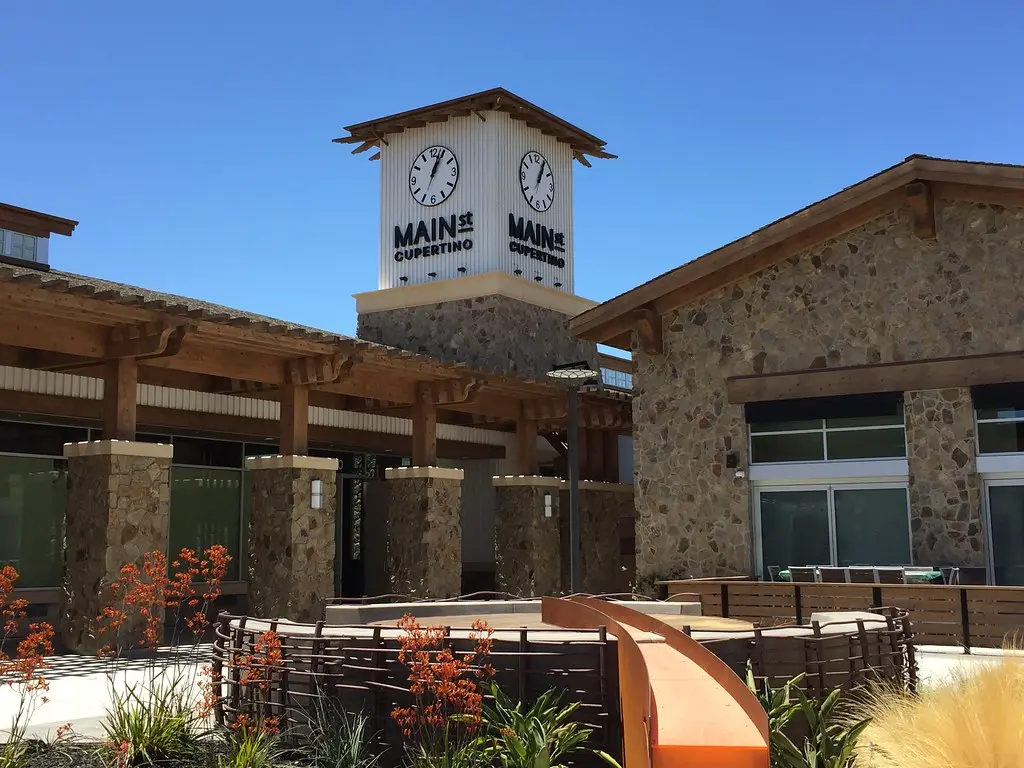
Main Street Cupertino represents this ongoing reinvention. Built in the 2010s as part of the city’s effort to create a true downtown core, it blends residential living with restaurants, shops, and open plazas. In doing so, it reflects a wider Silicon Valley trend: reimagining car-centered suburbs into walkable, mixed-use spaces that encourage community life.
⭐⭐⭐⭐⭐ - Iris Zhao
This plaza has a great atmosphere and is very well-designed. It’s clean, lively, and full of food options — from 85°C to ice cream shops, fried chicken places, hot pot, and even restaurants with flavors from different countries. The vibe is especially nice at night, with beautiful lighting and a relaxing ambiance. A great spot to hang out, grab a bite, or just enjoy the evening.
3. Rancho San Antonio County Park & Open Space Preserve
Important Information
- Fun Fact: A sprawling natural area with miles of trails, scenic vistas, and the popular Deer Hollow Farm.
- Address: 22500 Cristo Rey Dr, Cupertino, CA 95014
- Best time to visit: Morning for hiking; spring for wildflowers.
- Distance to city center: About 3 miles west of Cupertino.
- Pricing: Free admission and parking.
- Parking: Large lots near the main trailhead.
- Accessibility: Some accessible trails and restrooms available.
- Opening Hours: Daily from sunrise to sunset.
- Closing Hours: Varies by season (typically 7–8 p.m.).
- Discounts / Deals: Free entry all year.
Covering more than 4,000 acres of oak woodlands and grassy hillsides, Rancho San Antonio County Park & Open Space Preserve is one of Cupertino’s most historic landscapes. Its roots go back to Spanish land grants of the late 1700s, when vast ranchos were carved from Indigenous Ohlone lands. In the 19th century, Mexican and later American ranchers grazed cattle here, shaping the rolling terrain that still defines the park.
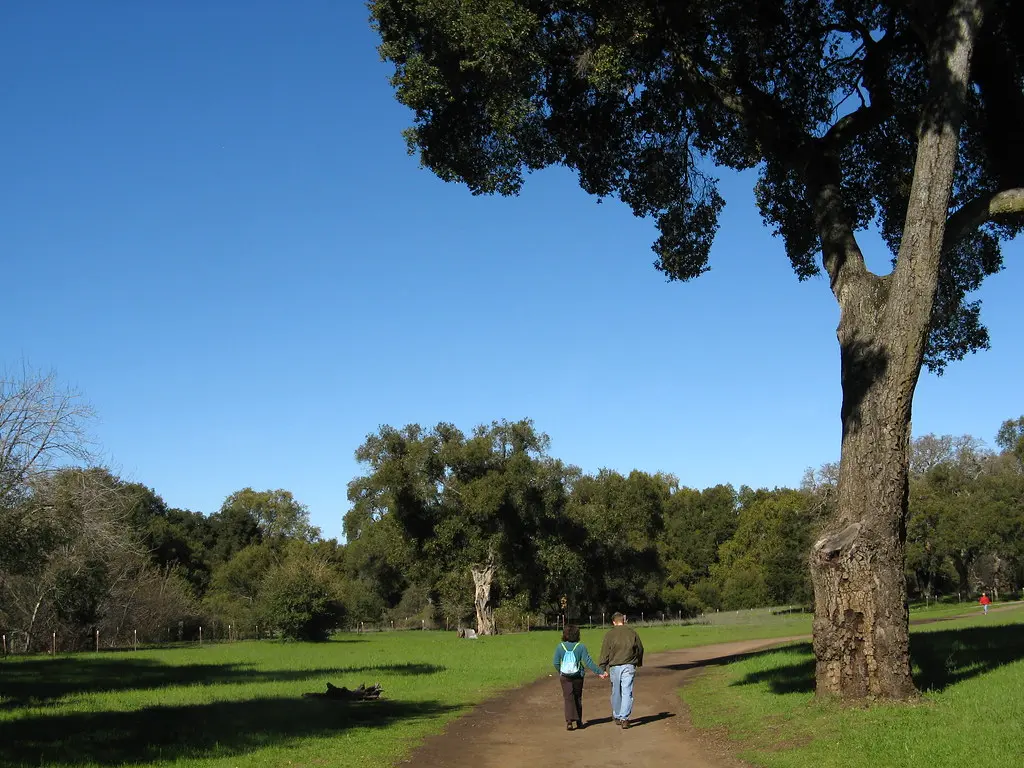
By the mid-20th century, Silicon Valley’s expansion threatened to erase these pastoral spaces. Rancho San Antonio was preserved through a partnership between Santa Clara County and the Midpeninsula Regional Open Space District, safeguarding it for future generations. Trails like the Wildcat Loop and visits to Deer Hollow Farm—a living history site recalling Cupertino’s agricultural past—connect visitors directly to the region’s farming and ranching heritage.
⭐⭐⭐⭐⭐ - Pooja Consul
Trails in good condition and ample parking. Some trails have great views of the valley. Weekends are busy and parking lots fill up fast. There is a restroom at the trailhead. You can spot lot of animals on the hike especially early morning and in evening.
4. Cupertino Memorial Park
Important Information
- Fun Fact: The city’s central park hosting community events like concerts, festivals, and Independence Day fireworks.
- Address: 21255 Stevens Creek Blvd, Cupertino, CA 95014
- Best time to visit: Spring and summer for outdoor events.
- Distance to city center: In the heart of Cupertino.
- Pricing: Free.
- Parking: Free on-site and street parking.
- Accessibility: Fully accessible walkways, restrooms, and picnic areas.
- Opening Hours: Daily 6 a.m.–10 p.m.
- Closing Hours: 10 p.m.
- Discounts / Deals: Free community events throughout the year.
Established in the 1950s, Cupertino Memorial Park has long been the city’s civic heart. Built during the early suburban boom that transformed Cupertino from orchard town to modern community, the park was designed to provide a shared gathering place as new residents arrived in waves to work in nearby tech industries and schools.
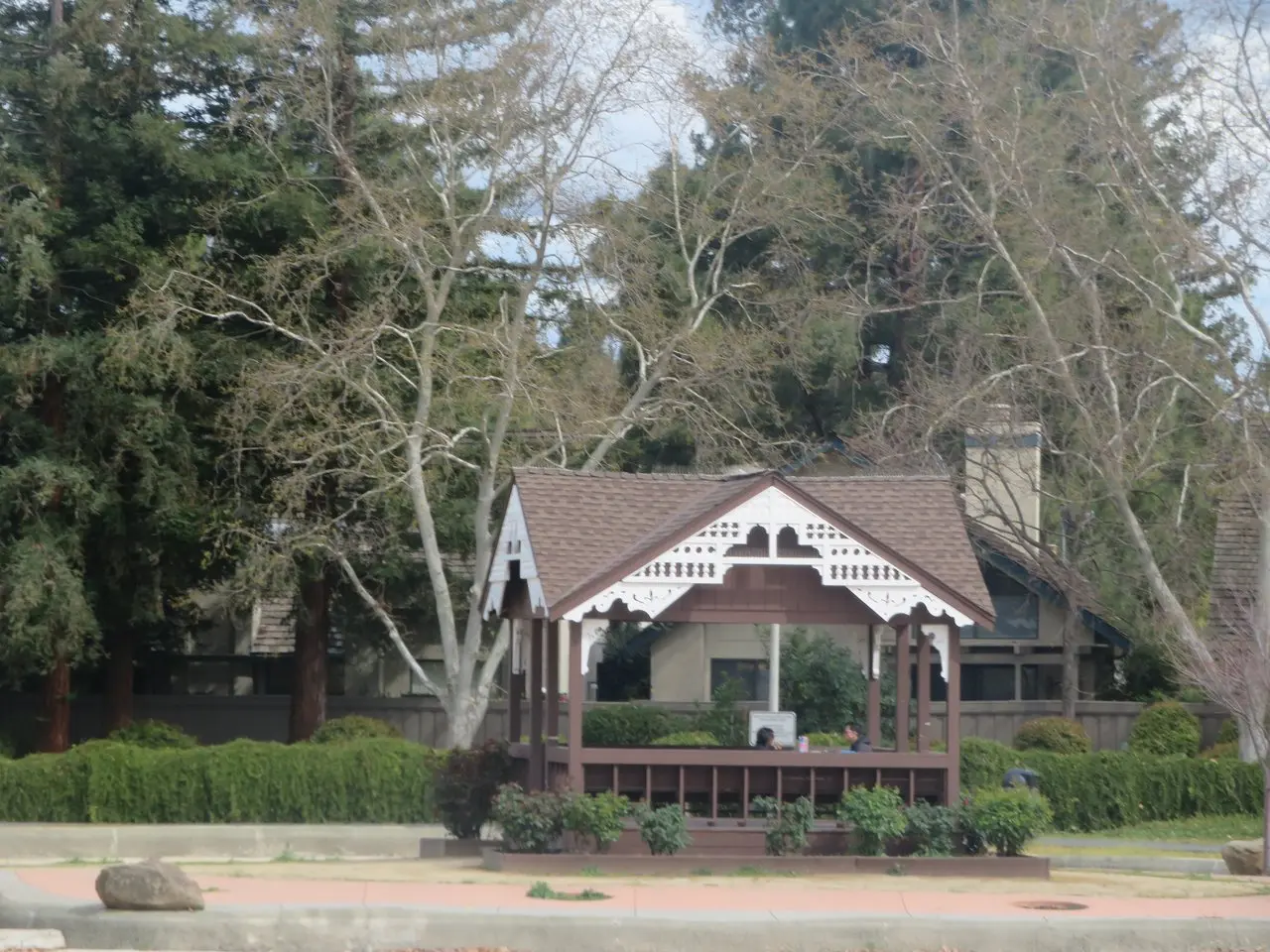
The park carries multiple layers of meaning. Its memorials honor veterans and local civic leaders, tying the city’s growth to the sacrifices of those who served. Over the decades, Memorial Park became the backdrop for festivals, concerts, and cultural celebrations that reflect Cupertino’s diversity—from the Cherry Blossom Festival, which honors its sister-city ties to Toyokawa, Japan, to Fourth of July picnics and music in the amphitheater.
⭐⭐⭐⭐⭐ - Myla Marie Cook
I had a fantastic time at the park! From the moment I arrived, I was impressed by how clean and well-maintained everything was. It felt like a safe haven for families and friends to gather and enjoy each other's company. The air was refreshingly crisp, making it a perfect escape from the hustle and bustle of daily life. This park is truly a delightful place to unwind and create lasting memories with loved ones!
5. Winchester Mystery House
Important Information
- Fun Fact: A world-famous Victorian mansion built by Sarah Winchester, with staircases to nowhere and mysterious architectural oddities.
- Address: 525 S Winchester Blvd, San Jose, CA 95128
- Best time to visit: Weekdays to avoid crowds; evenings for candlelight tours.
- Distance to city center: About 5 miles east of Cupertino.
- Pricing: General tour $41.99; extended tours $64.99.
- Parking: Free on-site parking.
- Accessibility: Accessible visitor center and select tour areas.
- Opening Hours: Daily 10 a.m.–5 p.m.
- Closing Hours: 5 p.m. (later for special events).
- Discounts / Deals: Online booking and seasonal promo offers.
Few landmarks in Silicon Valley have a story as strange as the Winchester Mystery House. Built in the late 19th century by Sarah Winchester, widow of rifle magnate William Wirt Winchester, the sprawling mansion became a legend in its own time. After inheriting immense wealth from the Winchester Repeating Arms Company, Sarah purchased an unfinished farmhouse near San Jose in 1884 and spent nearly four decades adding rooms, staircases, and corridors in a construction project with no clear end.
Some believed Sarah was haunted by the spirits of those killed by Winchester rifles and built the house’s maze-like design to confuse them. Others saw it as an eccentric display of wealth and grief. The result was a 160-room mansion filled with oddities—staircases leading to ceilings, doors opening into walls, and windows placed in the floor.
⭐⭐⭐⭐⭐ - Shannon
Winchester Mansion was such a beautiful and fascinating find. My husband had watched a documentary on it, and I had always heard about this house, so visiting in person was really exciting. We both appreciate vintage furniture and history, so this tour was right up our alley.
Our tour guide was vibrant, fun, and incredibly knowledgeable, which made the experience even more engaging. I’m usually the one in the group asking a ton of questions, and I definitely gave her a run for her money with a few she hadn’t heard before. I actually loved that — it gave her something new to think about after all her years of doing these tours.
If you enjoy architecture, history, or anything a little odd and mysterious, I highly recommend visiting. From windows in the floor to doors that don’t open, stairways to nowhere, and all the quirky details in between — it’s such an interesting and unique place to experience.
6. Apple Park Visitor Center
Important Information
- Fun Fact: The futuristic visitor center for Apple’s headquarters features an augmented reality model of Apple Park, a café, a rooftop terrace, and an exclusive Apple Store.
- Address: 10600 N Tantau Ave, Cupertino, CA 95014
- Best time to visit: Morning or weekdays for fewer crowds.
- Distance to city center: About 1.5 miles from central Cupertino.
- Pricing: Free entry; products and café items vary.
- Parking: Free on-site parking.
- Accessibility: Fully accessible, including ramps, elevators, and restrooms.
- Opening Hours: Monday–Friday 10 a.m.–6 p.m.; Saturday 10 a.m.–5 p.m.; Sunday 12 p.m.–5 p.m.
- Closing Hours: 5–6 p.m. depending on day.
- Discounts / Deals: Free entry and AR experience.
A stark contrast to Victorian excess, the Apple Park Visitor Center represents Cupertino’s most modern identity as the global headquarters of Apple Inc. Opened in 2017 alongside the company’s new “spaceship” campus, the Visitor Center offers a curated glimpse into Apple’s design philosophy. Its sleek architecture, rooftop terrace, and augmented reality model of Apple Park capture the minimalism and precision that define the brand.
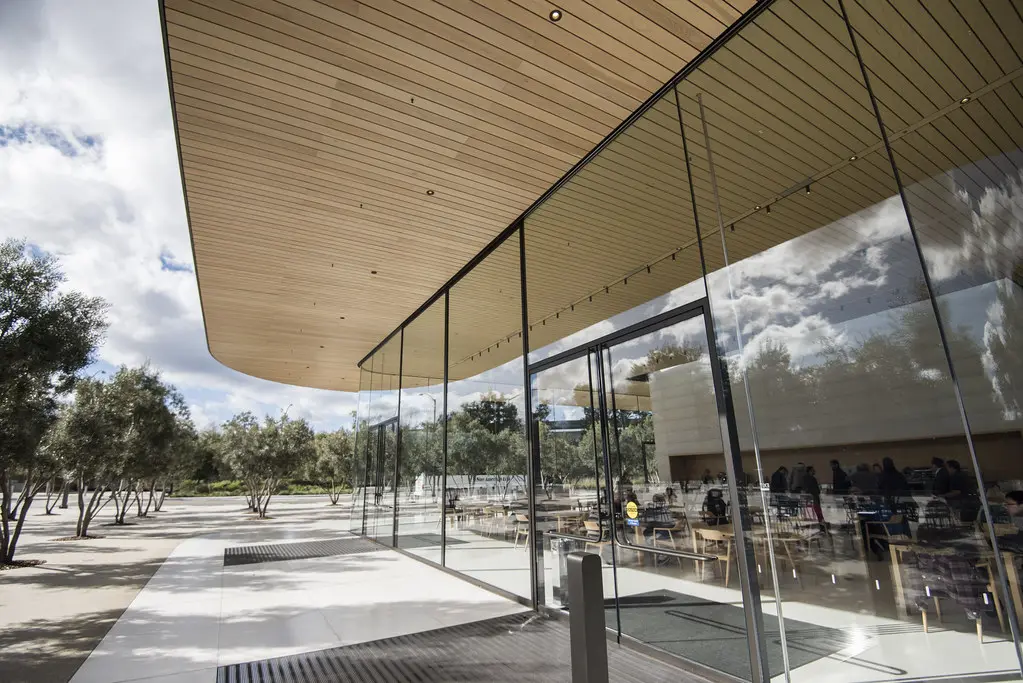
But the site also has historical resonance. Apple, founded in a Los Altos garage in 1976, grew into one of the most influential companies in history, transforming Cupertino from an orchard town into the epicenter of Silicon Valley. The Visitor Center, with its café and retail space, is more than a tourist stop—it’s a symbol of how Cupertino’s story shifted from agriculture to technology within a single generation.
⭐⭐⭐⭐⭐ - Chandra Sekhar
Beautiful architecture and amazing service at the Apple Visitor Center! The design is stunning, and there were friendly attendants everywhere helping with parking, directions, and anything we needed. Super organized and welcoming a great experience all around!
7. Bowlmor Cupertino
Important Information
- Fun Fact: A sleek, modern bowling alley with blacklight lanes, arcade games, and a full bar and restaurant.
- Address: 10123 N Wolfe Rd, Cupertino, CA 95014
- Best time to visit: Evenings and weekends for social events.
- Distance to city center: Around 1 mile north of central Cupertino.
- Pricing: $10–$15 per game; shoe rental $6.
- Parking: Free on-site parking.
- Accessibility: Fully accessible facility.
- Opening Hours: Sunday–Thursday 11 a.m.–11 p.m.; Friday–Saturday 11 a.m.–1 a.m.
- Closing Hours: 11 p.m.–1 a.m. depending on day.
- Discounts / Deals: Weekday specials and group packages.
Located in the heart of Silicon Valley, Bowlmor Cupertino carries forward a tradition of bowling alleys as community hubs. Bowling surged in popularity across the United States in the mid-20th century, becoming a favorite pastime for both families and league players. Cupertino, transitioning from an orchard town to a suburban community in those years, embraced these gathering places as part of its new social landscape.
Bowlmor represents the evolution of that tradition. Modernized with upscale dining, neon lanes, and event spaces, it reflects how classic pastimes have adapted to contemporary Silicon Valley lifestyles. While its aesthetic is new, its role echoes the bowling alleys of the 1950s and 60s—a place where friends, coworkers, and families come together outside the pressures of work and school.
8. Ortega Park
Important Information
- Fun Fact: A family-friendly park known for its large playground, sports courts, picnic spaces, and seasonal splash pad.
- Address: 636 Harrow Way, Sunnyvale, CA 94087
- Best time to visit: Daytime for picnics or family activities.
- Distance to city center: About 3 miles northeast of Cupertino.
- Pricing: Free entry.
- Parking: Free parking lot and street parking.
- Accessibility: Accessible restrooms, picnic areas, and playground.
- Opening Hours: Daily 6 a.m.–8 p.m.
- Closing Hours: 8 p.m.
- Discounts / Deals: Free public amenities year-round.
Ortega Park is one of Cupertino’s oldest and most beloved public spaces, deeply tied to the city’s suburban growth. Built during the post–World War II housing boom, the park was designed to serve the new neighborhoods rising across the Santa Clara Valley. Baseball diamonds, swimming pools, and open lawns made Ortega Park a central gathering place for families whose roots stretched from across the globe.
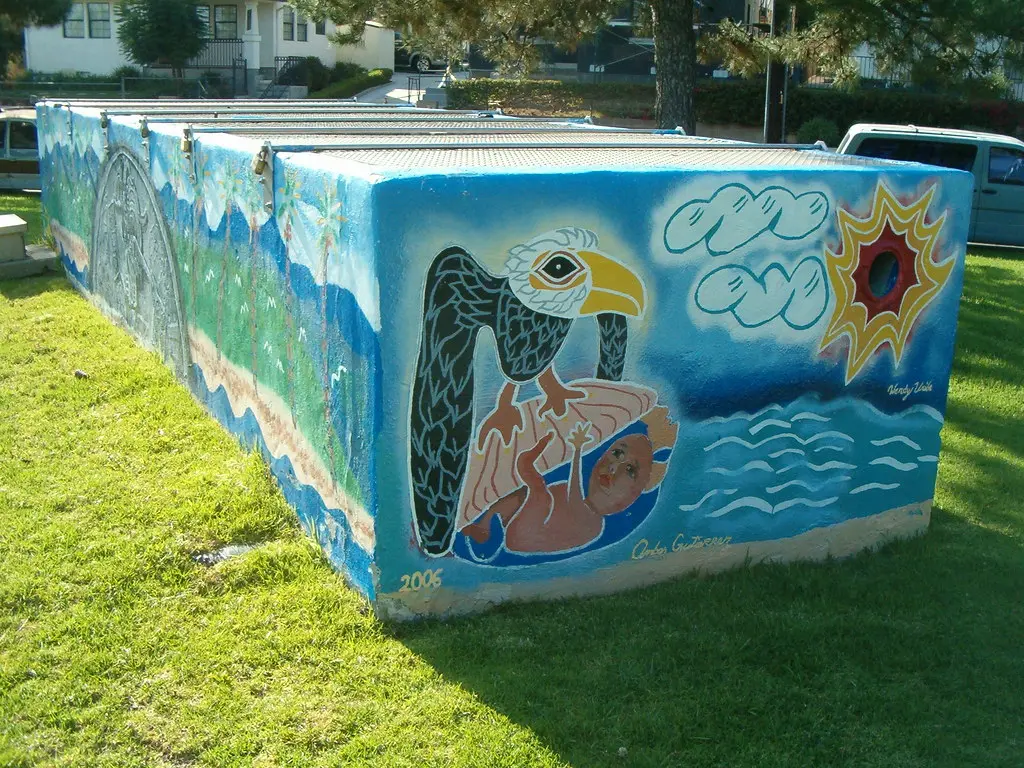
Over time, it became more than a recreational facility. Ortega Park hosted cultural festivals, civic events, and local traditions, reflecting Cupertino’s growing diversity. Its design embodies the mid-20th century belief that public parks were essential to healthy suburban life—a counterbalance to rapid development and the pressures of urbanization.
⭐⭐⭐⭐⭐ - J Duffy
Nice, larger park. Very fun and unique play structures for kids. A very popular water feature and a small climbing wall. Picnic areas are spread out so this park is really nice for parties. Lots of shady areas, too. This park has a lot of parties on the weekend so be sure to reserve a spot in advance. Easy parking in the surrounding neighborhood.
9. Hakone Estate and Gardens
Important Information
- Fun Fact: One of the oldest Japanese-style gardens in the Western Hemisphere, featuring koi ponds, bamboo groves, and tea ceremonies.
- Address: 21000 Big Basin Way, Saratoga, CA 95070
- Best time to visit: Spring for cherry blossoms and fall for foliage.
- Distance to city center: About 7 miles southwest of Cupertino.
- Pricing: Adults $12; seniors/students $8; children under 5 free.
- Parking: On-site paid parking ($10).
- Accessibility: Main paths and tea house accessible; some steep trails.
- Opening Hours: Daily 10 a.m.–5 p.m.
- Closing Hours: 5 p.m.
- Discounts / Deals: Annual passes and group rates available.
Set in the hills above Cupertino, Hakone Estate and Gardens is one of the oldest Japanese gardens in the Western Hemisphere. Its origins date back to 1915, when Isabel Stine, inspired by the Panama-Pacific International Exposition in San Francisco, purchased land to build a retreat modeled after classical Japanese gardens. The estate grew through the early 20th century as Japanese artisans and gardeners crafted tea houses, koi ponds, and tranquil landscapes that mirrored the traditions of Kyoto.
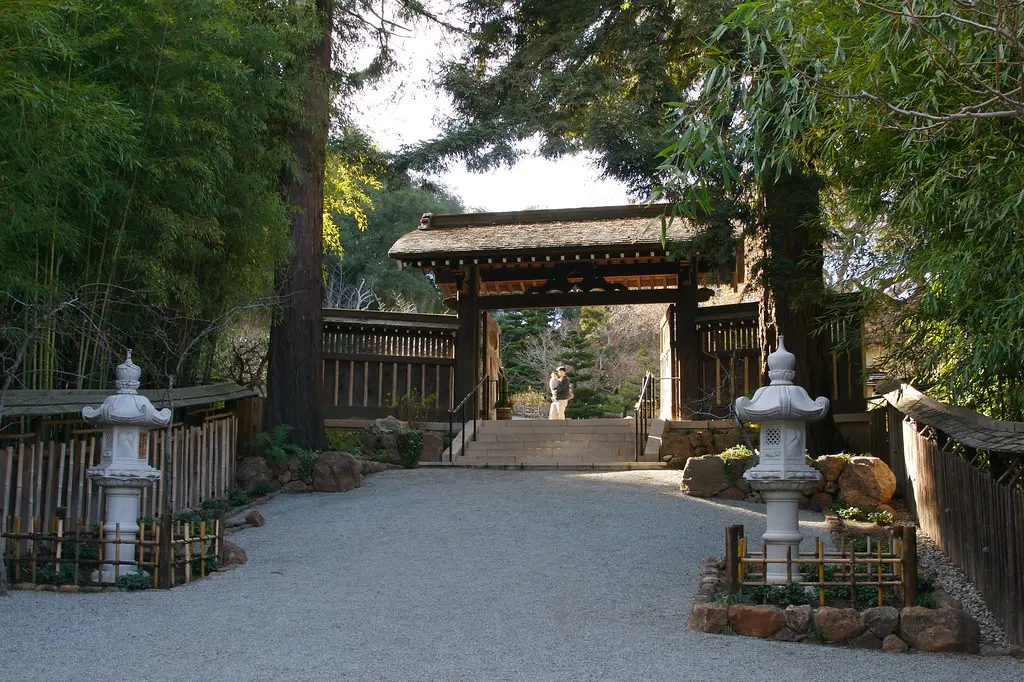
During World War II, Japanese cultural institutions in California faced neglect and even hostility, but Hakone endured, later revitalized by community groups and the city itself.
10. Golfland USA
Important Information
- Fun Fact: A classic amusement center offering mini-golf, arcade games, water slides (summer), and laser tag.
- Address: 855 E El Camino Real, Sunnyvale, CA 94087
- Best time to visit: Late afternoon or weekends for full activity access.
- Distance to city center: About 4 miles northeast of Cupertino.
- Pricing: Mini-golf $13–$16; arcade tokens and combo deals available.
- Parking: Free on-site parking.
- Accessibility: Accessible pathways and restrooms.
- Opening Hours: Sunday–Thursday 10 a.m.–10 p.m.; Friday–Saturday 10 a.m.–11 p.m.
- Closing Hours: 10–11 p.m.
- Discounts / Deals: Combo passes and group discounts.
For generations of Cupertino residents, Golfland USA has been a place where nostalgia and entertainment meet. Part of the mini-golf boom that swept the United States in the mid-20th century, Golfland became a staple of suburban fun, with its brightly painted castles, arcade games, and neon-lit courses.
Its significance lies in how it reflects Cupertino’s shift into a suburban community after World War II. As orchards gave way to subdivisions, attractions like Golfland became essential family destinations—affordable, lighthearted, and rooted in the culture of leisure that defined postwar America. For many who grew up in Cupertino, birthday parties, first dates, and summer nights at Golfland form part of the city’s shared memory.
⭐⭐⭐⭐⭐ - Claudio P
We loved the two courses. The place is well maintained, and the service is excellent (we needed to make a break because of the heat and they allowed us to leave and come back two hours later).
11. Jollyman Park
Important Information
- Fun Fact: A peaceful neighborhood park featuring shaded walking trails, a children’s play area, and open green lawns ideal for picnics.
- Address: 10000 Byrne Ave, Cupertino, CA 95014
- Best time to visit: Morning or late afternoon for cooler weather.
- Distance to city center: About 2 miles west of downtown Cupertino.
- Pricing: Free entry.
- Parking: Limited street parking available.
- Accessibility: Accessible playground and walking paths.
- Opening Hours: Daily 6 a.m.–8 p.m.
- Closing Hours: 8 p.m.
- Discounts / Deals: Free community park amenities.
Jollyman Park may not carry the grandeur of Cupertino’s larger open spaces, but it is rooted in the same suburban vision that defined the Santa Clara Valley in the postwar years. As orchards gave way to housing developments in the 1950s and 60s, parks like Jollyman were designed to anchor neighborhoods, giving new residents green space for sports, picnics, and play.
Though smaller in scale, Jollyman Park reflects the city’s commitment to weaving community life into its rapid growth. Over time, it became a familiar gathering place—where youth soccer games played out under the California sun, families celebrated milestones, and neighbors forged connections in a city increasingly defined by global technology.
12. Santana Row
Important Information
- Fun Fact: A luxurious outdoor shopping and dining district in nearby San Jose, featuring high-end boutiques, gourmet restaurants, and frequent live events.
- Address: 377 Santana Row, San Jose, CA 95128
- Best time to visit: Evenings and weekends for events and nightlife.
- Distance to city center: About 6 miles east of Cupertino.
- Pricing: Free to explore; dining and shopping vary ($15–$100+).
- Parking: Free parking garages and valet service.
- Accessibility: Fully accessible with elevators and ramps.
- Opening Hours: Shops 10 a.m.–9 p.m.; restaurants often open later.
- Closing Hours: Around 9 p.m. (varies by venue).
- Discounts / Deals: Seasonal sales and happy hour specials.
Just outside Cupertino’s borders, Santana Row in San Jose is one of Silicon Valley’s most iconic lifestyle destinations. Opened in 2002, the development was built on land once dominated by low-rise commercial buildings and warehouses. Its design drew inspiration from European boulevards, with tree-lined streets, outdoor cafés, and luxury shops creating a sense of urban elegance in the heart of suburbia.
Historically, Santana Row represents a shift in Silicon Valley’s identity. Where the mid-20th century emphasized suburban sprawl, malls, and car culture, the early 21st century embraced mixed-use developments that encouraged walkability, dining, and nightlife. Santana Row became a new kind of town square for a region without a traditional downtown, attracting not only shoppers but also tech professionals seeking community beyond the office.
13. Creekside Park
Important Information
- Fun Fact: A well-maintained local park featuring picnic tables, basketball courts, and open play fields surrounded by creekside trails.
- Address: 10455 Miller Ave, Cupertino, CA 95014
- Best time to visit: Daytime for recreation or picnics.
- Distance to city center: Around 1 mile from downtown Cupertino.
- Pricing: Free.
- Parking: On-site and street parking available.
- Accessibility: Accessible restrooms and picnic areas.
- Opening Hours: Daily 6 a.m.–8 p.m.
- Closing Hours: 8 p.m.
- Discounts / Deals: Free public amenities year-round.
Creekside Park is a classic example of the suburban green spaces that emerged during Cupertino’s rapid growth in the 1960s and 70s. Once part of the fertile Santa Clara Valley—famous for its orchards of apricots and cherries—the land was gradually transformed into subdivisions and public parks as the population surged with the rise of Silicon Valley.
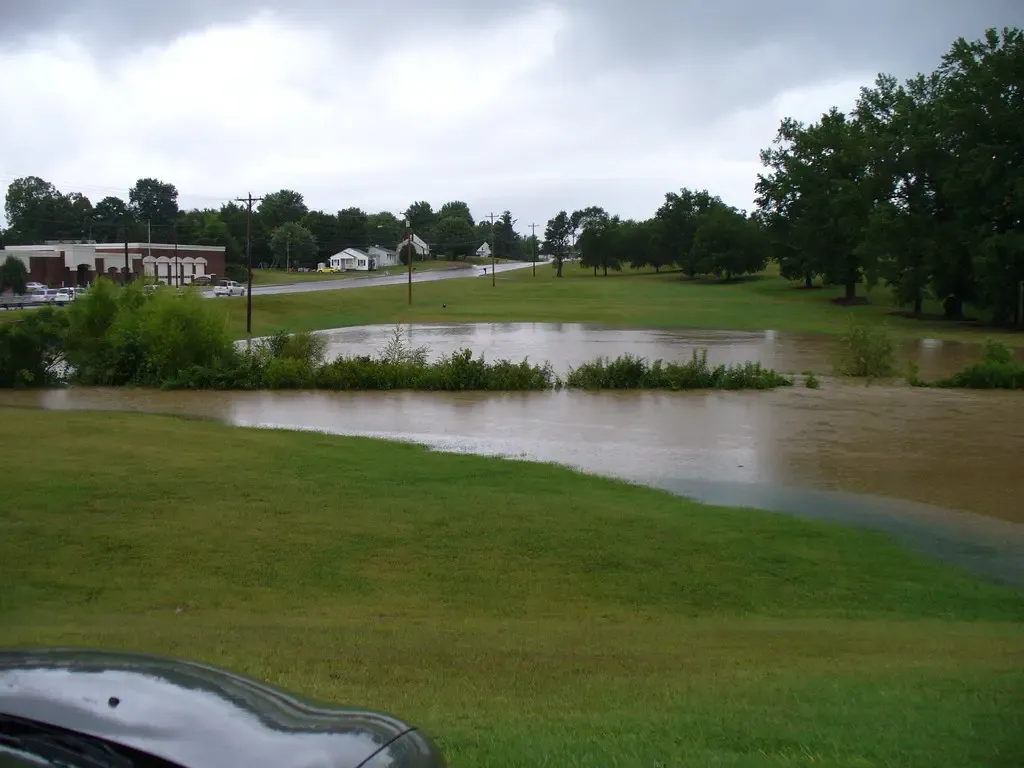
The park reflects the mid-century planning philosophy that every neighborhood should have a communal heart. Playgrounds, open lawns, and sports courts made Creekside not only a recreational spot but also a space where new residents—many of them arriving from across the globe to work in tech and education—could build connections.
Creekside Park stands as a reminder that Cupertino’s story is not just about innovation at Apple’s campus or the hum of servers, but also about the ordinary, everyday spaces where families gather, children play, and communities take root.
⭐⭐⭐⭐⭐ - Barak Halpern
Very nice playground. There is one section for young toddlers in another section for more adult toddlers and children.
At the children section there is less shade but still very nice park.
14. Alexander’s Steakhouse
Important Information
- Fun Fact: A Michelin-recognized fine-dining restaurant blending classic American steakhouse dishes with Japanese influences and premium Wagyu beef.
- Address: 19379 Stevens Creek Blvd, Cupertino, CA 95014
- Best time to visit: Dinner hours or weekends for a special dining experience.
- Distance to city center: In the heart of Cupertino.
- Pricing: Entrées $40–$150; tasting menus available.
- Parking: Valet and lot parking available.
- Accessibility: Fully accessible entrance and dining areas.
- Opening Hours: Daily 5 p.m.–9 p.m.; Sunday brunch 11 a.m.–2 p.m.
- Closing Hours: 9 p.m.
- Discounts / Deals: Seasonal tasting menu promotions.
In a city best known for technology and cultural diversity, Alexander’s Steakhouse adds another layer to Cupertino’s story: the rise of fine dining in the shadow of Silicon Valley. Opened in the early 2000s, the restaurant became a destination not only for residents but also for visiting executives and professionals, blending the classic American steakhouse with Asian-inspired flavors.
Its significance lies in what it represents. Cupertino, once defined by orchards and family diners, had by the 21st century become an international hub, and its culinary scene evolved to match. Alexander’s embodies that shift—luxury dining that reflects global influences while serving a clientele shaped by Silicon Valley’s wealth and international reach.
15. Fremont Older Open Space Preserve
Important Information
- Fun Fact: A 739-acre preserve offering panoramic views of Silicon Valley, historic farm structures, and miles of hiking, biking, and horseback trails.
- Address: 22600 Prospect Rd, Saratoga, CA 95070
- Best time to visit: Early morning or late afternoon for cooler hikes.
- Distance to city center: About 5 miles southwest of Cupertino.
- Pricing: Free entry and parking.
- Parking: Trailhead parking lots available.
- Accessibility: Some flat trails accessible; most moderately rugged.
- Opening Hours: Daily sunrise to sunset.
- Closing Hours: Varies seasonally.
- Discounts / Deals: Free year-round access.
The Fremont Older Open Space Preserve carries with it both natural beauty and a storied past. Named after Fremont Older, a crusading newspaper editor in early 20th-century San Francisco, the preserve reflects his love for the landscapes of the Santa Clara Valley. Older purchased land in the foothills in the 1910s, building a ranch retreat where he and his wife, Cora, entertained artists, writers, and reformers. Their home, Woodhills, still stands within the preserve as a link to that era of progressive thought and cultural ferment.
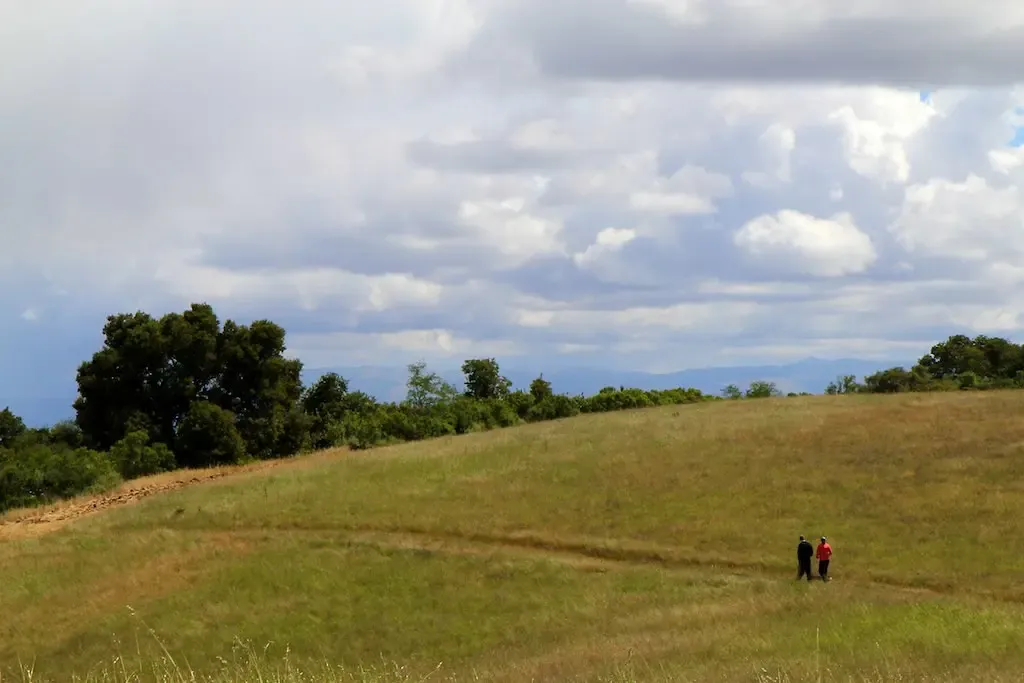
But the land’s story stretches further back. For centuries, it was home to the Ohlone people, who relied on its oak woodlands and seasonal creeks. In the Mexican rancho period, cattle grazed the hillsides, and later, American settlers planted orchards that contributed to the valley’s reputation as the “Valley of Heart’s Delight.”
When the preserve was officially established in 1975, it marked a turning point in Silicon Valley’s history—an era when rapid suburban growth threatened to consume every hillside. By protecting these 739 acres, conservationists ensured that Cupertino’s residents could still walk trails, climb to panoramic views, and feel connected to the land’s layered history.
Fremont Older is not just open space—it is a living archive of the valley’s Indigenous roots, ranching past, and cultural awakening.
⭐⭐⭐⭐⭐ - Lisa Incatasciato
Lovely views. Leased dogs allowed. Lots of trail options - all hilly. Portable bathroom at parking lot. Arrived at 10am on a Saturday and lot was full had to wait for others to leave. Lots of deer. Some trails are wide and other get quite tight and narrow near drop off.
Where to Eat in Cupertino
| Restaurant | Address | Phone | Notable Dish / Specialty |
|---|---|---|---|
| Pacific Catch Cupertino | 19399 Stevens Creek Blvd, Cupertino, CA 95014 | (408) 899-2604 | Sustainable seafood, West Coast fish house fare including poke, grilled fish & shellfish |
| Alexander’s Steakhouse | Main Street Cupertino (inside Main Street Cupertino Center) | (408) 252-9000 | Upscale steakhouse with Japanese influence, prime cuts & refined dining |
| Lazy Dog Restaurant & Bar | Main Street Cupertino (Main Street Cupertino Center) | (408) 996-8883 | Comfort American fare, burgers, flatbreads, family-friendly atmosphere |
| La Pizzeria - Cupertino | Cupertino, CA (inside local shopping center) | Not listed publicly | Roman-style pizza, Italian staples, casual setting |
| Gyu-Kaku Japanese BBQ | Cupertino, CA (Marketplace area) | (408) 366-1660 | Japanese BBQ / Yakiniku where you grill your own meats and veggies at the table |
| Home Eat (formerly Fashion Wok) | Cupertino, CA | (408) 996-6633 | Chinese / Taiwanese casual fare, steam table & hot pot style options |
| Oren’s Hummus | Cupertino, CA (in local strip) | (408) 996-8555 | Middle Eastern / Mediterranean, hummus, pita, fresh salads & grilled meats |
Cupertino Vs Other Neighboring Cities
| Metric | Cupertino, CA | Sunnyvale, CA | San Jose, CA | Mountain View, CA |
|---|---|---|---|---|
| Median Household Income | $231,139 | $181,862 | ~$141,565 | (very high, comparable to Cupertino) |
| Per Capita Income | $106,821 | $95,752 | $63,253 | (comparable high per capita because of tech presence) |
| Poverty Rate | ≈ 4.3 % | (higher than Cupertino)≈ 5-8 % | (higher, more varied neighborhoods) ~7-10 % | (low, but still higher than Cupertino) under 6 % |
| Commute Time (mean to work) | ~27.6 min | (slightly lower or comparable) ~25-30 min | (higher) ~30-35 min | (similar) ~25-30 min |
| Housing / Cost of Living | Very expensive, among the highest in the area | Also very expensive, though a bit more variety in housing stock | High cost but more segmentation and some more affordable enclaves | High cost, premium in tech / prestige neighborhoods |
| Education & Workforce | Extremely high educational attainment, many tech professionals | Strong tech / engineering workforce, many in startups & internet firms | Broad economy: tech, services, manufacturing, larger diversity of job types | High concentration of tech / research companies & professionals |
| Vibe & Role | Residential, tech-oriented, affluent suburban with strong schools & quality of life | More balanced between tech, commercial, residential, somewhat more dynamic | Large city hub — business, cultural, more urban features, more variance | Tech / startup hub, often premium real estate, heavy demand from professionals |
How to Get To Cupertino
By Air
- The closest major airport is Mineta San Jose International Airport (SJC), about 10 miles southeast of Cupertino.
- Other nearby options:
• San Francisco International Airport (SFO) — ~30 miles north.
• Oakland International Airport (OAK) — ~40 miles north.
Once you land, you’ll likely use a car, ride-share, or transit to reach Cupertino.
By Road / Car
- Cupertino is accessible via Interstate 280 and State Route 85.
- Key expressways also include Lawrence Expressway and Foothill Expressway.
- Major surface streets to know: Stevens Creek Boulevard, De Anza Boulevard, Homestead Road, Wolfe Road.
Public Transit
- Cupertino is served by the Santa Clara Valley Transportation Authority (VTA) buses, including routes 23, 25, 51, 55, 523, etc.
- From surrounding cities, you can combine VTA buses with train or light rail systems that connect to nearby hubs.
- The 511 SF Bay system helps coordinate schedules and interconnects between bus, Caltrain, and rail services.
Conclusion
Cupertino’s story is one of transformation—from fertile orchards in the “Valley of Heart’s Delight” to a thriving city at the center of the world’s most innovative region. Its parks and preserves recall the land’s deeper roots, its gardens and cultural sites highlight the community’s diversity, and its landmarks—both historic and modern—show how the city continues to evolve while honoring its past.
Exploring Cupertino means stepping into a place where natural beauty, suburban history, and global innovation coexist. Whether you’re wandering through preserved ranchlands, enjoying a family outing at a local amusement spot, or standing in awe at Apple’s futuristic campus, you’ll find layers of history woven into everyday life.
With its balance of heritage and modernity, Cupertino offers visitors a window into Silicon Valley that goes beyond the headlines. And if you’re planning a visit, this guide has highlighted some of the most memorable things to do in Cupertino.
FAQ
1. Should I move to Cupertino or not?
Moving to Cupertino can be rewarding if you value excellent schools, safety, and proximity to Silicon Valley tech hubs. The city is clean, quiet, and family-oriented, with a strong sense of community and high educational standards. However, the cost of living is extremely high—housing prices and rent are among the most expensive in the U.S. Many residents work long hours in nearby tech companies, so the atmosphere can feel career-focused rather than social. If you’re moving for a tech job or want top-tier schools for your children, Cupertino is worth considering.
2. Is Cupertino overrated?
Some locals on Reddit argue Cupertino is overrated, mostly due to its inflated housing costs and lack of nightlife. The reputation for elite schools and Apple’s headquarters gives the city prestige, but it’s also somewhat homogenous and quiet. Residents often describe it as safe but lacking in “soul” compared to nearby San Jose or Mountain View. That said, its parks, community centers, and schools are exceptional. It’s a wonderful place to raise kids or focus on career stability—but not ideal if you’re seeking cultural diversity or an active nightlife scene.
3. Which nearby city is best if I work in Cupertino?
If you work in Cupertino but want to save money or live somewhere livelier, consider nearby cities like Sunnyvale, Santa Clara, or Campbell. Sunnyvale offers a good balance of affordability and proximity. Santa Clara is slightly cheaper and has more apartment complexes and younger residents. Campbell has a charming downtown with restaurants and nightlife while remaining within a 20–30 minute commute. Mountain View is also great for those who value walkable areas and social life but comes with a price similar to Cupertino. Your choice depends on whether you prioritize cost, commute, or lifestyle.
4. What’s it like growing up in Cupertino?
Growing up in Cupertino often means access to excellent schools, safe neighborhoods, and academic pressure. Students describe a competitive but supportive environment where education is highly valued. The community is culturally diverse, particularly with strong Asian-American representation, leading to a rich mix of traditions and cuisines. However, Reddit users often mention that the social scene can feel limited—there aren’t many hangout spots for teens, and nightlife is almost nonexistent. Still, most alumni say Cupertino gave them strong opportunities and a good foundation for university and career success.
5. How good are Cupertino’s schools (CUSD and FUHSD)?
Cupertino Union School District (CUSD) and Fremont Union High School District (FUHSD) are consistently ranked among California’s best. Schools like Monta Vista High and Lynbrook High are renowned for academic rigor, advanced STEM programs, and college admissions success. Teachers are experienced, parent involvement is high, and extracurricular activities are plentiful. However, this excellence comes with stress—students report feeling pressure to perform at elite levels. Parents moving to the area should be aware of the competitive culture, but also that public education here rivals many private schools in quality.
6. Is $70,000 a year enough to live in Cupertino?
Realistically, $70,000 per year is not enough for a comfortable lifestyle in Cupertino unless you have subsidized housing or share expenses. Rent for a one-bedroom apartment can exceed $2,800–$3,500 per month, and groceries, utilities, and healthcare are all significantly above the national average. Most residents earn six figures, especially those working in tech. For a single person, living frugally and sharing accommodations might make it feasible, but for families, it’s very tight. Many workers commute from more affordable areas like Milpitas or Gilroy while enjoying Cupertino’s work opportunities.


